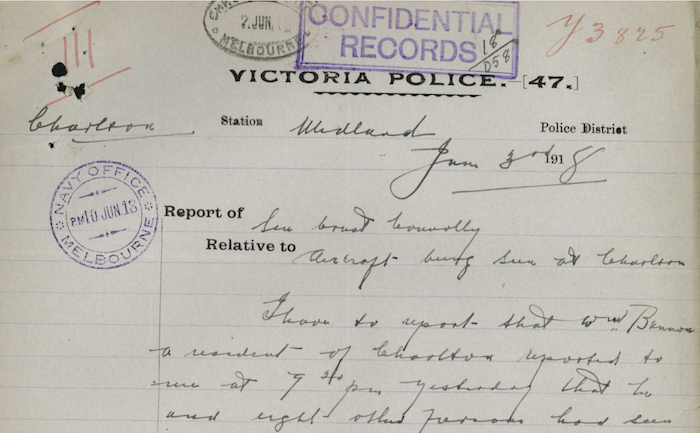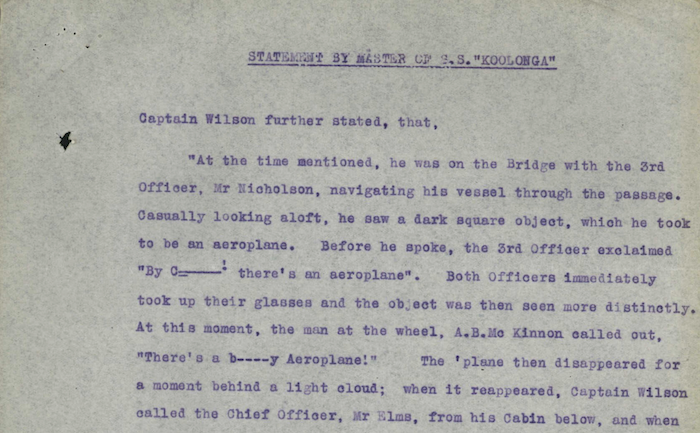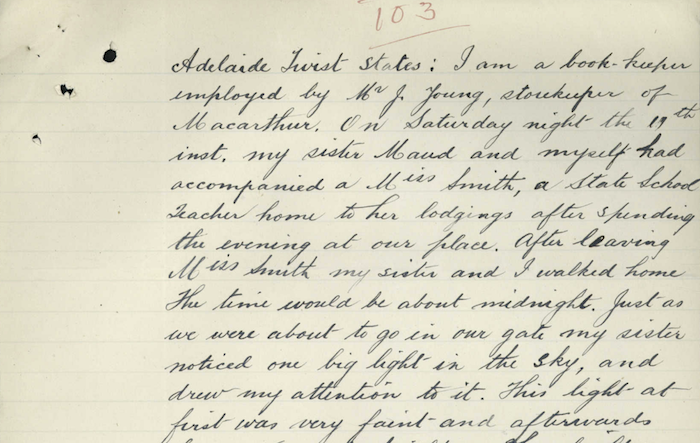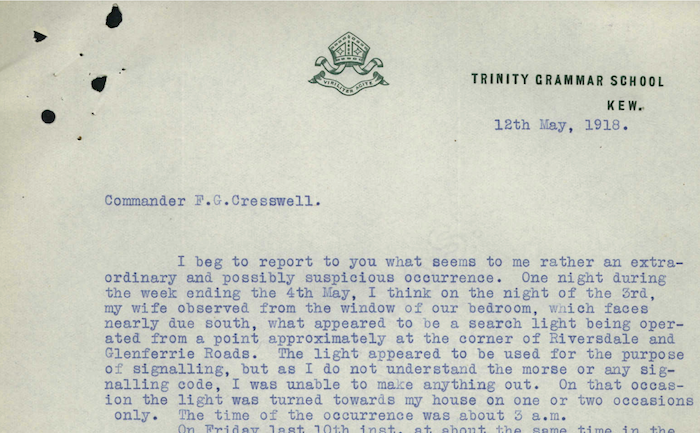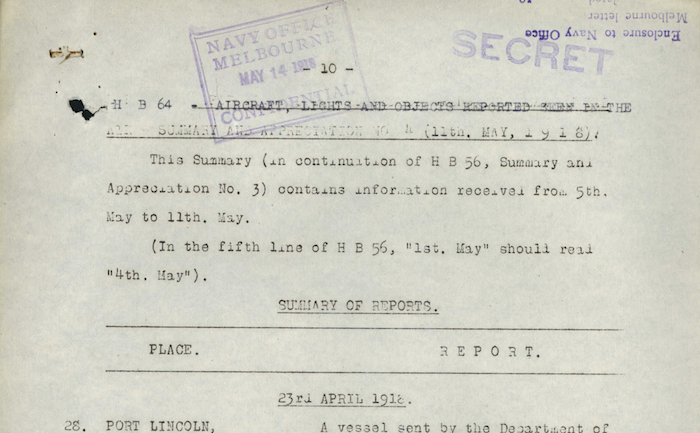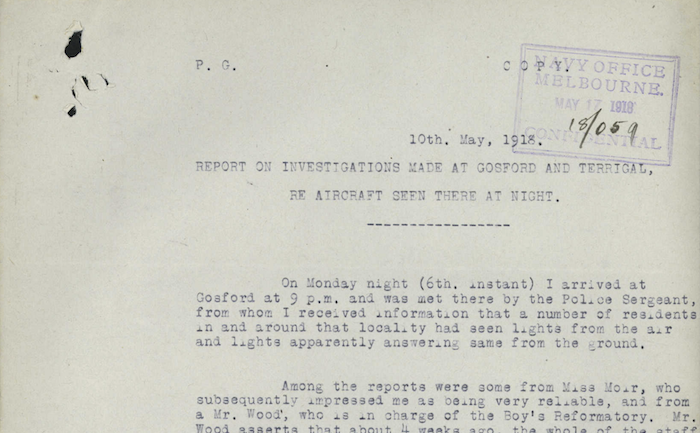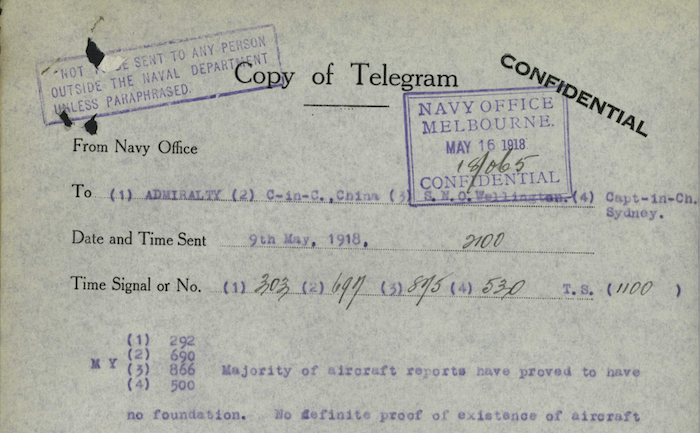Monday, 3 June 1918
NAA: MP1049/1, 1918/066, page 836 is a report by Senior Constable P. J. Connolly regarding ‘an aeroplane flying in a Westerly direction’ seen at 9pm the previous evening at Charlton, in the Mallee region of Victoria, by William Bannon and no less than ‘eight other farmers’, who all saw the machine together: One bright white […]


